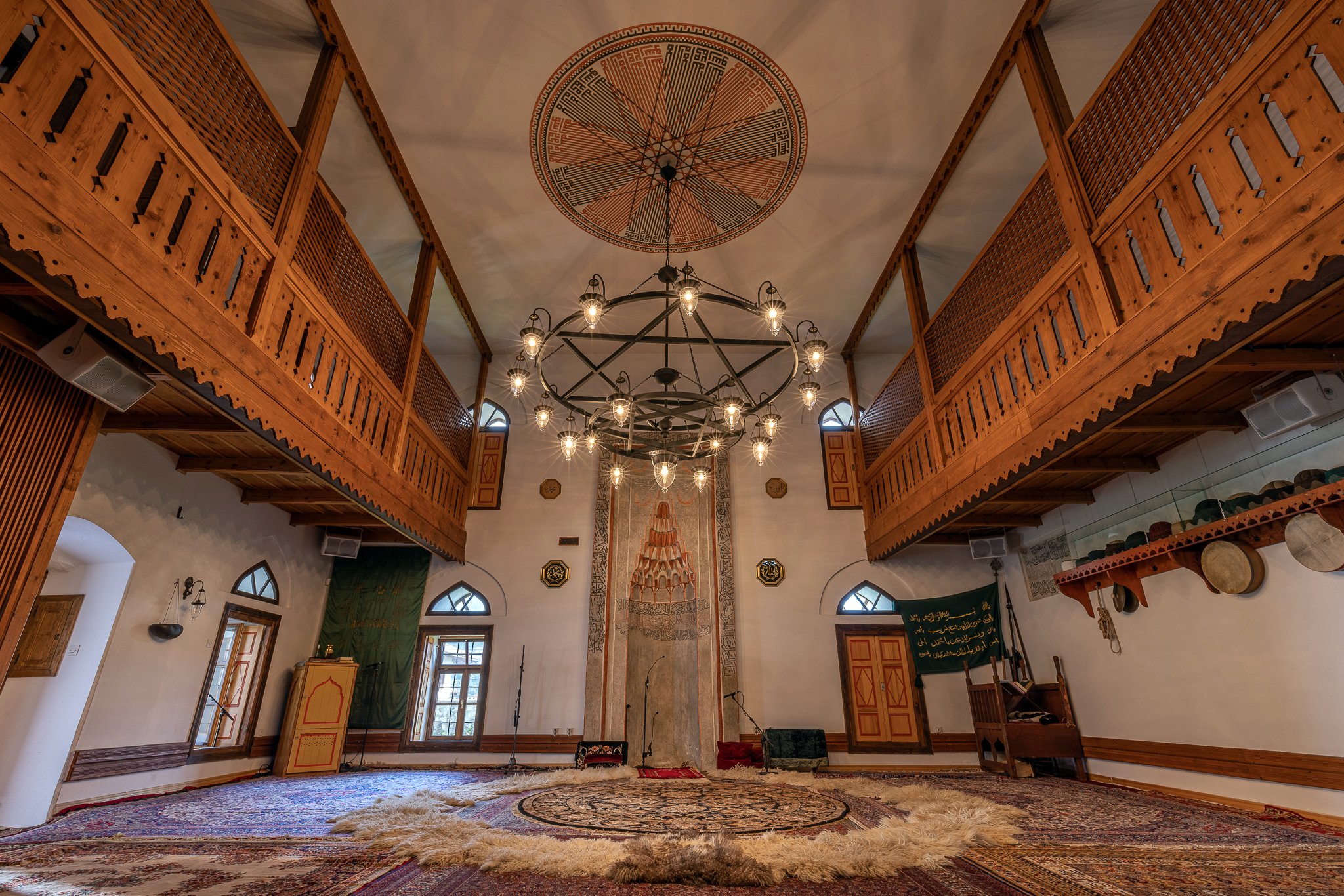
HADŽI SINAN TEKKE
Author: Assist. prof. Haris Dervišević, PhD, Faculty of Philosophy of University of Sarajevo • Photo & video: Mirza Hasanefendić
Sufism, or spiritual commitment on the road to the knowledge of God is deeply rooted in the tradition of Bosniaks. Historical sources, archeological material and oral stories confirm the presence of dervishes in Bosnia and Herzegovina as early as in the first half of the 15th century. The following centuries recorded a spread of dervish orders; thus, different time intervals witnessed activities of Bektashis, Khalwatis, Bayramis, Malamatis, Qadirites, Mevlevis, Rifa'is, Shadilis, Badawiyyas and others. Their activities often exceeded the narrow circle of loyalists of Sufism since they tried to be a positive example in the community. The place where dervishes gather is called a tekke, which is not only a place of communal prayer but a place where they mix, learn and contemplate. The tekke in the contemporary sense could thus be understood as a high cultural and educational institution.
Hadži Sinan Tekke in Sarajevo, built in about 1640, is one of the most significant tekkes in Bosnia and Herzegovina. Its building was commissioned by Silahdar Mustafa-pasha, a close associate of sultan Murat IV. Everything indicates that building of the tekke followed the successful Baghdad campaign in 1639, when Silahdar Mustafa-pasha gave a significant contribution to conquest of the city. Guided by the desire to mark the favorable outcome of the military campaign and to express his gratitude to his hometown, Mustafa-pasha commissioned the most monumental tekke in Bosnia and Herzegovina. Ottoman documents consistently named it Silahdar Mustafa-pasha Tekke, while amongst the local people it is better known as Hadži Sinan, after Mustafa-pasha's father.
Ever since its establishment Hadži Sinan Tekke has been the epicenter of all happenings pertaining to dervishes' life, both in Sarajevo and in the whole Southeast Europe. The credit for it goes to sheikhs, heads of the tekke, whose activities were very well known. One of the most distinguished sheikhs was Hasan Kaimi-baba (d. 1691), whose work Waridat was widely known. Sheikhs of Hadži Sinan Tekke have preserved their high reputation until this day. Works in Bosnian, Arabic, Turkish and Persian have been read and interpreted in the tekke. For a while, a treatment center also worked within the tekke.
The building of the tekke was probably designed by Koca Kasim-aga, the main architect of the Ottoman Empire. It was built mostly of stone, and is characterized by cubic forms. The organization of space and rooms in the building is subjected to needs of Qadiri tariqa (order), which the tekke belongs to. The courtyard of the tekke, as well as its surroundings, host nišans (Islamic tombstones) of the tekke champions and of all those who wanted their final resting place to be close to the tekke. One of the tombstones that stand out is the turbe (tomb) of Hadži Sinan and his wife, erected in the 17th century.
The tekke is unique both by its dimensions and by calligraphic works on its walls. At the very entrance to the tekke, on four walls of the reception space, there are 94 calligraphic compositions. The content of calligraphic works includes parts of the Qur'an, Prophet's tradition and dervish sayings. The biggest calligraphic composition is found on the courtyard wall, by the entrance to the central room (semahan), where the credo of Islam, Lā ilāhe illallāh, Muhammed resūlu-llāh is written in the form of a circle. Researchers believe that this work in the form of a circle of 2.85 m in diameter is a true masterpiece unrivalled in the world of calligraphy. Dervishes' search for the essence of existence and coming close to God is also woven into this calligraphic work, which sends the message that no matter which of the twelve roads we choose, the destination is always the same – coming closer to God.





























